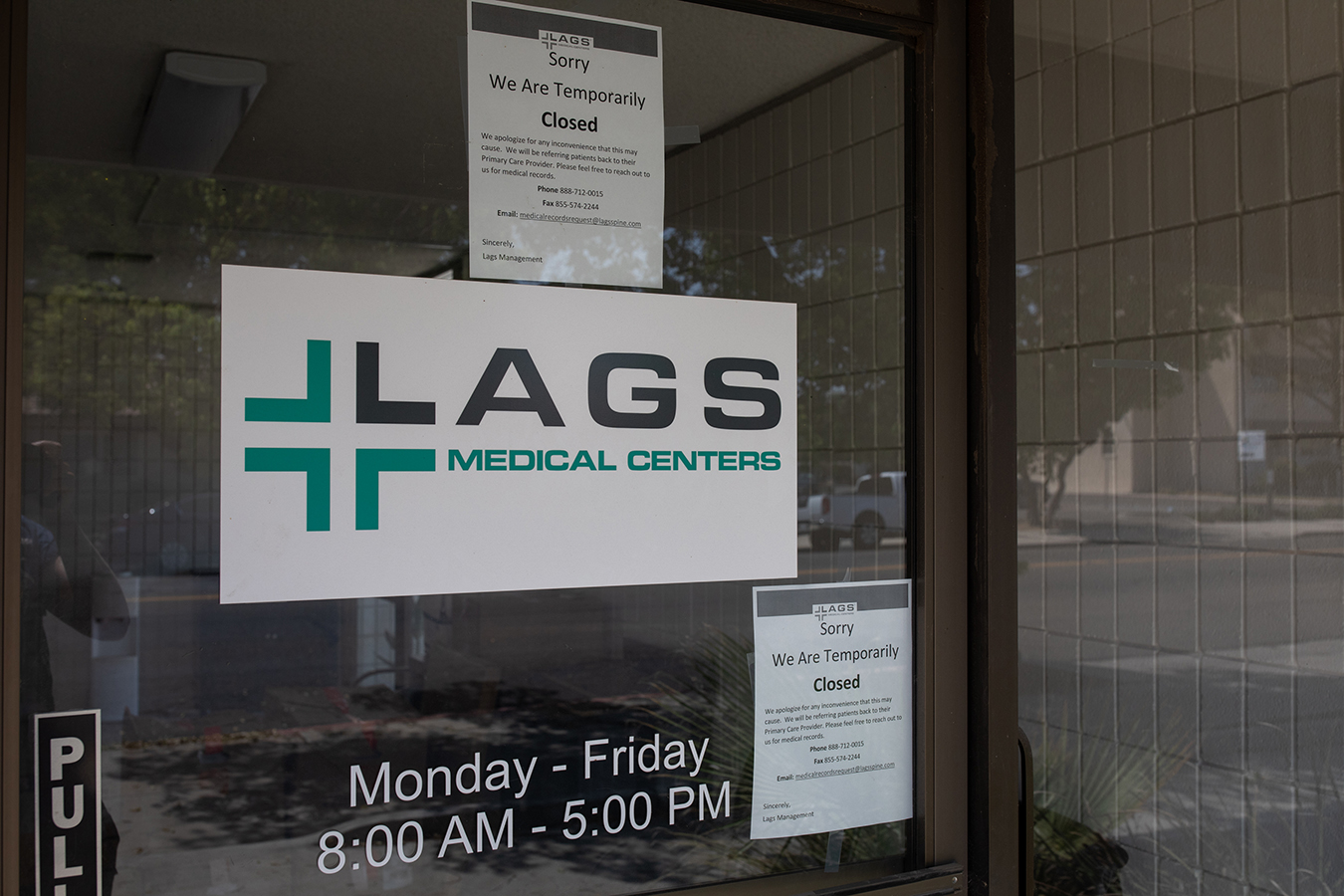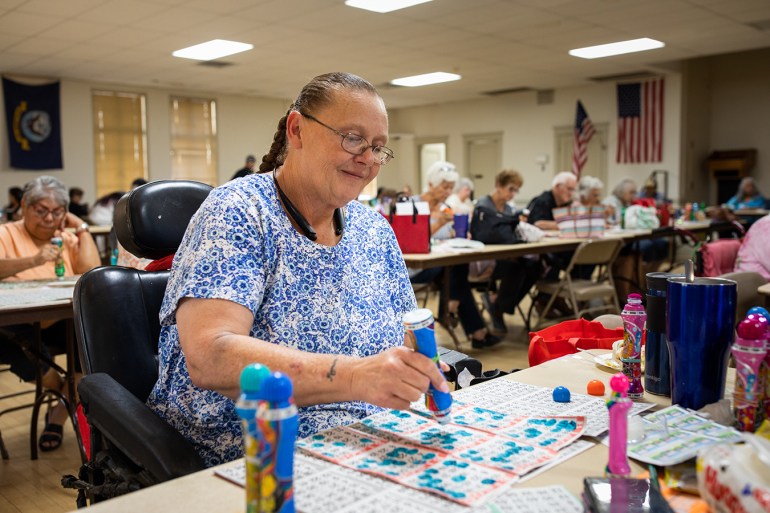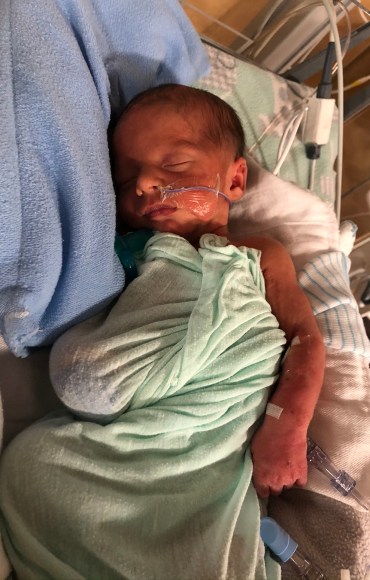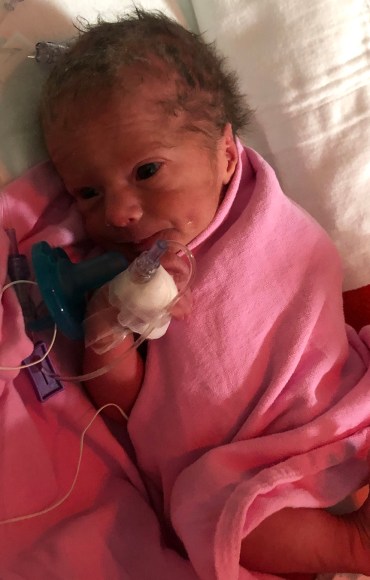HANFORD, Calif. — On May 13 of last year, the cellphones of thousands of California residents undergoing treatment for chronic pain lit up with a terse text message: “Due to unforeseen circumstances, Lags Medical Centers will be closing effective May 19, 2021.”
In a matter of days, Lags Medical, a sprawling network of privately owned pain clinics serving more than 20,000 patients throughout the state’s Central Valley and Central Coast, would shut its doors. Its patients, most of them working-class people reliant on government-funded insurance, were left without ready access to their medical records or handoffs to other physicians. Many patients were dependent on opioids to manage the pain caused by a debilitating disease or injury, according to alerts about the closures that state health officials emailed to area physicians. They were sent off with one final 30-day prescription, and no clear path for how to handle the agony — whether from their underlying conditions or the physical dependency that accompanies long-term use of painkillers — once that prescription ran out.
The closures came on the same day that the California Department of Health Care Services suspended state Medi-Cal reimbursements to 17 of Lags Medical’s 28 locations, citing without detail “potential harm to patients” and an ongoing investigation by the state Department of Justice into “credible allegations of fraud.” In the months since, the state has declined to elaborate on the concerns that prompted its investigation. Patients are still in the dark about what happened with their care and to their bodies.
Even as the government remains largely silent about its investigation, interviews with former Lags Medical patients and employees, as well as KHN analyses of reams of Medicare and Medi-Cal billing data and other court and government documents, suggest the clinics operated based on a markedly high-volume and unorthodox approach to pain management. This includes regularly performing skin biopsies that industry experts describe as out of the norm for pain specialists, as well as notably high rates of other sometimes painful procedures, including nerve ablations and high-end urine tests that screen for an extensive list of drugs.
Those procedures generated millions of dollars in insurer payments in recent years for Lags Medical Centers, an affiliated network of clinics under the ownership of Dr. Francis P. Lagattuta. The clinics’ patients primarily were insured by Medicare, the federally funded program for seniors and people with disabilities, or Medi-Cal, California’s Medicaid program for low-income residents.
Taken individually, the fees for each procedure are not eye-popping. But when performed at high volume, they add up to millions of dollars.
Take, for example, the punch biopsy, a medical procedure in which a circular blade is used to extract a sample of deep skin tissue the size of a pencil eraser. The technique is commonly used in dermatology to diagnose skin cancer but has limited use in pain management medicine, usually involving a referral to a neurologist, according to multiple experts interviewed. These experts said it would be unusual to use the procedure as part of routine pain management.
In Lagattuta’s specialty — physical medicine and rehabilitation, a common pain management field — just six of the nearly 8,000 U.S. physicians treating Medicare patients billed for punch biopsies on more than 10 patients in 2019, the most recent year for which data was available. Four, including Lagattuta, were affiliated with Lags Medical.
Medicare and Medi-Cal data are organized differently, and each provides distinct insights into Lags Medical’s billing practices. For Medicare, KHN’s findings reflect the number of procedures and actual reimbursements billed through Lagattuta’s provider number. But the Medicare figures do not encompass services and billing amounts for other providers across the chain, nor reimbursements for patients enrolled in private Medicare Advantage plans.
KHN used Medi-Cal records to assess the volume of services performed across the entire chain. But the state could not provide totals for how much Lags Medical was reimbursed because of California’s extensive use of managed-care plans, which do not make their reimbursement rates public. Where possible, KHN estimated the worth of Medi-Cal procedures based on the set rates Medi-Cal pays traditional fee-for-service plans, which are public.
Lags Medical clinics performed more than 22,000 punch biopsies on Medi-Cal patients from 2016 through 2019, according to state data. Medi-Cal reimbursement rates for punch biopsies changed over time. In 2019 the state’s reimbursement rate was more than $200 for a set of three biopsies performed on patients in fee-for-service plans.
Laboratory analysis of punch biopsies was worth far more. Lags Medical clinics sent biopsies to a Lags-affiliated lab co-located at a clinic in Santa Maria, according to medical records and employee interviews. From 2016 through 2019, Lags Medical clinics and providers performed tens of thousands of pathology services associated with the preparation and examination of tissue samples from Medi-Cal patients, according to state records. The services would have been worth an estimated $3.9 million using Medi-Cal’s average fee-for-service rates during that period.
In that same period, Medicare reimbursed Lagattuta at least $5.7 million for pathology activities using those same billing codes, federal data shows.
Much of the work at Lags Medical was performed by a relatively small number of nurse practitioners and physician assistants, each juggling dozens of patients a day with sporadic, often remote supervision by the medical doctors affiliated with the clinics, according to interviews with former employees. Lagattuta himself lived in Florida for more than a year while serving as medical director, according to testimony he provided as part of an ongoing malpractice lawsuit that names Lagattuta, Lags Medical, and a former employee as defendants.
Former employees said they were given bonuses if they treated more than 32 patients in a day, a strategy Lagattuta confirmed in his deposition in the malpractice lawsuit. “If they saw over, like, 32 patients, they would get, like, $10 a patient,” Lagattuta testified.
The lawsuit, filed in Fresno County Superior Court, accuses a Lags Medical provider in Fresno of puncturing a patient’s lung during a botched injection for back pain. Lagattuta and the other named defendants have denied the incident was due to negligent treatment, saying, in part, the patient consented to the procedure knowing it carried risks.

Hector Sanchez, the nurse practitioner who performed the injection and is named in the lawsuit, testified in his own deposition that providers at the Lags Medical clinic in Fresno each treated from 30 to 40 patients on a typical workday.
According to Sanchez’s testimony and interviews with two additional former employees, Lags Medical clinics also offered financial bonuses to encourage providers to perform certain medical procedures, including punch biopsies and various injections. “We were incentivized initially to do these things with cash bonuses,” said one former employee, who asked not to be named for fear of retribution. “There was a lot of pressure to get those done, to talk patients into getting these done.”
In his own deposition in the Fresno case, Lagattuta denied paying bonuses for specific medical procedures.
Interviews with 17 former patients revealed common observations at Lags Medical clinics, such as crowded waiting rooms and an assembly-line environment. Many reported feeling pressure to consent to injections and other procedures or risk having their opioid supplies cut off.
Audrey Audelo Ramirez said she had worried for years that the care she was receiving at a Lags Medical clinic in Fresno was subpar. In the past couple of years, she said, there were sometimes so many patients waiting that the line wrapped around the building.
Ramirez, 52, suffers from trigeminal neuralgia, a rare nerve disease that sends shocks of pain across the face so severe it’s known as the “suicide disease.” Over the years, Lags Medical had taken over prescribing almost all her medications. This included not only the opioids and gabapentin she relies on to endure excruciating pain, but also drugs to treat depression, anxiety, and sleep issues.
Ramirez said she often felt pressured to get procedures she didn’t want. “They were always just pushing injections, injections, injections,” she said. She said staffers performed painful punch biopsies on her that resulted in an additional diagnosis of small fiber neuropathy, a nerve disorder that can cause stabbing pain.
She was among numerous patients who said they felt they needed to undergo the recommended procedures if they wanted continued prescriptions for their pain medications. “If you refuse any treatment they say they’re going to give you, you’re considered noncompliant and they stop your medication,” Ramirez said.
She said she eventually agreed to an injection in her face, which she said was administered without adequate sedation. “It was horrible, horrible,” she said. Still, she said, she kept going to the office because there weren’t many other options in her town.
Lagattuta, through his lawyer, declined a request from KHN to respond to questions about the care provided at his clinics, citing the state investigation. “Since there is an active investigation, Dr. Lagattuta cannot comment on it until it is completed,” attorney Matthew Brinegar wrote in an email. Lagattuta’s license remains in good standing, and he said in his deposition in the Fresno lawsuit that he is still seeing patients in California.
Experts interviewed by KHN noted that medical procedures such as injections can have a legitimate role in comprehensive pain management. But they also spoke in general terms about the emergence of a troubling pattern at U.S. pain clinics involving the overuse of procedures. In the 1990s and early 2000s, problematic pain clinics hooked patients on opioids, then demanded cash to continue prescriptions, said Dr. Theodore Parran, who is a professor of medicine at Case Western Reserve University and has served as an expert witness in federal investigations into pain clinics.
“What has replaced them are troubled pain clinics that hook patients with the meds and accept insurance, but overuse procedures which really pay well,” he said. For patients, he added, the consequences are not benign.
“I mean they are painful,” he said. “You’re putting needles into people.”

‘Knee Injections, Hip Injections, Foot Injections’
Before moving to California in 1998, Dr. Francis Lagattuta lived in Illinois and worked as a team doctor for the Chicago Bulls during its 1995-96 championship season. Out West, he opened a clinic in Santa Maria, a Latino-majority city along California’s Central Coast known for its strawberry fields, vineyards, and barbecue. From 2015 to 2020, the chain grew from a couple of clinics in Santa Barbara County to dozens throughout California, largely in rural areas, as well as far-flung locations in Washington state, Delaware, and Florida.
The California portion of the chain is organized as more than two dozen corporations and limited liability corporations owned by Lagattuta. His son, Francis P. Lagattuta II, was a manager for the company.
On the Lags Medical website and in conversation with employees, the elder Lagattuta claimed he was on the vanguard of diagnosing and treating small fiber neuropathy. Much of the website has now been taken down. But pages available via an archival site claim he had pioneered a three-pronged approach to pain management that made minimal use of opioids and surgeries, instead emphasizing testing, injections, mental health, diet, and exercise. “In keeping with his social justice values, Dr. Lagattuta plans to share these findings to the rest of the world, hopefully to help solve the opioid crisis, and end suffering for millions of people struggling with pain,” touted a biography once highlighted on the website.
Numerous Lags Medical patients interviewed by KHN said that even when they were given punch biopsies and a subsequent diagnosis of neuropathy, their treatment plan continued to involve high doses of opioid medications.
Dr. Victor C. Wang, chief of the division of pain neurology at Brigham and Women’s Hospital in Boston, said punch biopsies are occasionally used in research but are not a standard part of pain medicine. Instead, small fiber neuropathy is usually diagnosed with a simple clinical exam.
“The treatment is going to be the same whether you have a biopsy or not,” said Wang. “I always tell the fellows, you can do this test or that one, but is it really going to change the management of the patient?”
Ruby Avila, a mother of three in Visalia, remembers having the punch biopsies done at least three times during her four years as a Lags Medical patient. “I have scars down my leg,” she said. Each time, she said, providers removed a set of three skin specimens that were used to diagnose her with small fiber neuropathy.
Avila, 37, who has lived with pain since childhood, had found it validating to finally have a diagnosis. But after learning more about how common the biopsies were at Lags Medical, she was shaken. “It’s overwhelming to hear that they were doing it on a lot of people,” she said.
Sanchez, the nurse practitioner named in the Fresno lawsuit, spoke of other procedures that garnered bonuses: “Trigger point injections, knee injections, hip injections, foot injections for plantar fasciitis and elbow injections” all qualified for $10 bonuses, he said in his testimony.
Two former employees, who asked not to be named, echoed Sanchez, saying they were incentivized to do certain procedures, including injections and punch biopsies.
In his testimony in the Fresno case, Lagattuta denied paying bonuses for procedures. “It was only for the patients,” he said. “We never did it based on procedures.”
Incentive systems for a specific procedure are “completely unethical,” said Dr. Michael Barnett, an assistant professor of health policy at Harvard. “It’s like giving police officers a quota for speeding tickets. What do you think they’re going to do? I can’t think of any justification.”

Dr. Carl Johnson, 77, is a pathologist who directed Lags Medical’s Santa Maria lab from 2018 to 2021. Johnson said the only specimens he looked at came from punch biopsies, the first time in his long career as a pathologist that he had been asked to run such an analysis. On an average day, he said, he examined the slides of about 40 patients, searching for signs of small fiber neuropathy. Lagattuta gave him papers to read on peripheral neuropathy and assured him they were on the cutting edge of care for pain patients. Johnson said he “never thought there was anything untoward going on” until he arrived on his last day and was told to pack up his belongings because the entire operation was shutting down.
Lags Medical performed other procedures at rates that also set them apart. From 2015 through 2020 — the span for which KHN had state data — Lags Medical performed more than 24,000 nerve ablations, a procedure in which part of a nerve is destroyed to reduce pain, on Medi-Cal patients. That’s more than 1 in 6 of all nerve ablations billed through Medi-Cal during that period.
An analysis of federal data also shows Lagattuta was an outlier. For example, in 2018 he billed Medicare for nerve ablations more often than 88% of the doctors in his field who performed the procedure.
Lags Medical also used the in-house lab to run drug tests on patients’ urine samples. From 2017 through 2019, Lags Medical facilities often ordered the most extensive — and expensive — set of drug tests, which check for the presence of at least 22 drugs, according to state and federal data.
For perspective, in 2019, more than 23,000 of the most extensive drug tests were ordered on Medi-Cal patients under Lagattuta’s provider number, more than double the number tied to the next highest biller. The next five top billers were all lab companies.
Overall, from 2017 through 2019, nearly 60,000 of the most extensive drug tests were billed to Medicare and Medi-Cal under Lagattuta’s provider number. Medicare reimbursed Lagattuta $5.4 million for these tests during that period. Using state fee-for-service rates, the testing billed to Medi-Cal would have been worth an estimated $6.3 million. That doesn’t include less extensive drug screens or those billed under other providers’ numbers.
Pain management experts described the use of extensive screening as unnecessary in routine pain treatment; the overuse of such tests has been the subject of numerous Medicare investigations in recent years.
Private pain clinics like Lags Medical are only loosely regulated and generally are not required to hold a special license from the state. But the physicians who work there are regulated by the Medical Board of California.
In December 2019, a patient who’d visited clinics in both Visalia and the Central Coast filed a complaint against Lagattuta with the medical board claiming, among other things, that she received biopsies that were not properly performed, that she underwent excessive testing, and that positive drug tests had been falsified. The medical board had another pain management doctor review more than 300 pages of documents and found “no deviations from the standard of care” and “did not find any over testing, or improperly performed biopsies.”
He did, however, find some record-keeping problems, including numerous procedures in which patient consent was not documented. He also found instances in which procedures were performed and repeated without documentation that they were effective. The patient who filed the complaint was given a medial branch nerve block in November 2014, followed by a radiofrequency ablation in December, and another in February. No improvements for the patient were ever noted in the charts, the investigating doctor found.
The medical board chalked it up to a record-keeping error and fined Lagattuta $350.
A Halfway-Normal Life
On a warm evening in late July, Leah Munoz drove her power wheelchair around the long plastic tables at the Veterans Memorial Building in Hanford, a dusty farm town in California’s Central Valley. Senior bingo night was crowded with gray-haired players waiting for the game to begin. She found an empty spot and carefully set out $50 worth of bingo cards, alongside her collection of 14 brightly colored daubers.
Munoz, 55 and a mother of six, said she has suffered from a litany of illnesses — thyroid cancer, breast cancer, lupus, osteoarthritis — that leave her in near-constant pain. She’s been playing bingo since she was a little girl, and said it helps distract from the pain and calm her mind. She looks forward to this event all week.
Munoz was a Lags Medical patient for about four years and, while her pain never disappeared, the opioids prescribed provided enough relief for her to continue doing the things she loved. “There’s a difference between addiction and dependence. I need it to live a halfway-normal life,” Munoz said.
After Lags Medical closed in May, her primary care doctor initially refused to refill her opioid prescriptions. She said she called the Lags Medical offices to try to get a copy of her medical records to prove her need, and even showed up in person. But she said she was unable to get them. As the pills dwindled and the pain surged, Munoz said, it became hard to leave her home. “I missed a lot of bingo, a lot of grocery shopping, a lot of going to my grandkids’ birthday parties. You miss out on life,” she said. Ultimately, she said, her primary care doctor referred her to another pain clinic, and she was able to resume her prescription.


Even with pain medications, Munoz said, she never received true relief during her time as a patient at Lags Medical. She said she felt coerced to get several injections, none of which seemed to help. “If I didn’t get the procedures, I didn’t get the pain medication,” she said. Her husband, Ramon, a landscaper who was also a patient, received an injection there that he said left him with permanent stiffness in his neck.
Munoz knows at least five other people at bingo night who were former patients at Lags Medical. One of them, Rick Freeman, came over to her table to chat. He swayed back and forth as he walked, his knees, he explained, swollen after 35 years living with HIV. At Lags Medical, Freeman said, he felt pressured by staff to receive injections if he wanted to continue receiving his opioid prescriptions. “If you don’t cooperate with them, they would reduce your meds down,” he said.
At the front of the room, Gail Soto, who ran the event, sold bingo cards to the latecomers. Soto, 72, said she injured her back while working an administrative job at a construction company years ago and suffers from spinal stenosis, rheumatoid arthritis, and fibromyalgia. She, too, was a patient at Lags Medical for years. In addition to her opioid prescription, Soto said, she received repeated injections and three nerve ablations. At first, the ablations helped, but what staff members didn’t tell her, she said, was that the nerves they destroyed could grow back. Ultimately, she said, the procedures left her in worse pain.
Soto’s biggest concern is the spinal stimulator that she said Lags Medical surgically inserted into her back five years ago. She said the doctors told her the device would work so well that she would no longer need her pain pills. She said they didn’t explain that the device would work only two hours a day, and on one side of her body. She remained in too much pain to give up her meds, she said, and, five years later, the battery is failing.
Soto sleeps in a recliner chair in her three-bedroom mobile home in Lemoore, another small city near Hanford. It’s well kept but humble, and she and her husband keep a collection of wind chimes on the front porch that create a wave of gentle music when a breeze passes by. The couple take good care of each other and their two beloved Chihuahuas, but life has become increasingly difficult for Soto.
As the battery on her spinal stimulator has started to fail, she said, she has sudden electrical pulses that shoot up her body. “My husband says sometimes when I sleep that my body will just jump up in the air,” she said. But now that Lags Medical is closed, she said, she can’t find a doctor willing to remove the device. “Most doctors are telling me right now, ‘We can’t, because we didn’t [put it in]. We don’t want nothing to do with that.’”

Waitlists and Withdrawal
Audrey Audelo Ramirez said she picked up her final refill from Lags Medical on June 4 and by July 4 had no meds left to treat her pain. Ramirez said she called every pain management clinic in Fresno, but none were taking new patients.
“They left us all high and dry,” she said. “Everybody.”
In the weeks that followed the closures, county officials throughout the Central Valley saw a flood of patients on high doses of opioids in search of new providers, they said. Patients couldn’t access their medical records, so other providers had no idea what their treatments had been.
“We had to create a crisis response to it because there was no organized response at that time,” said Dr. Rais Vohra, the interim health officer for Fresno County.
Fresno County’s health system is already lean, Vohra said. Toss in this abrupt closure and you end up in the kind of crisis rarely seen in other fields of medicine: “You’d never do this with a cancer clinic,” he said. “You’d never abruptly stop chemo.”
The state asked Dr. Phillip Coffin, director of substance abuse research for the San Francisco Department of Public Health, to run provider training and persuade doctors to take on new patients. Many practices have rules against taking new patients on opioids, or will refuse to prescribe doses above certain thresholds.
“We know that when you stop prescribing opioids, some people end up with death from suicide, overdose, increased illicit opioid use, pain exacerbations. It’s really important to have a continuity, and that is not really possible in the current opioid-prescribing culture,” Coffin said. The threat to patients is so severe that the FDA issued a warning in 2019 against cutting patients off from prescription opioids.
Gina, a retired nurse who asked to be identified by only her first name for fear she’d be discriminated against by other doctors, had been a Lags Medical patient for six years. She said she called every practice she could find in her Central Coast town, and was put on a waiting list at one. Suffering from a severe case of scoliosis, she started rationing the pain pills she had come to rely on.
When she finally secured an appointment, she said, she was told by the doctor she was on “some very strong meds” and he would fill only one of her two prescriptions. “You’re like a criminal,” she said. “You’re branded as ‘we don’t trust you.’”
She started experiencing withdrawal symptoms — sweating, lost appetite, sleeplessness, anxiety. Worst of all, her pain “came back with a vengeance,” she said.
“I think about this, what I’d have been like if I’d never gone through pain management. I sometimes wonder if I’d be better off.”
As for Ramirez, her primary care doctor finally secured an appointment for her at another pain clinic, she said. It was in the same space as the old Lags Medical clinic, and she said she recognized many of the staff members. But now there was a new name: Central California Pain Management. From her perspective, it was as if nothing had changed. And she still doesn’t know whether she needs to worry about the care she received during more than four years at Lags Medical.
The new clinic’s owner, Dr. Ashok Parmar, said that he is leasing the space and that Lagattuta is his landlord. Parmar said he doesn’t do punch biopsies, nor does he diagnose small fiber neuropathy. After all, he said, he would treat the pain the same way, with or without the diagnosis.
How We Did This
KHN evaluated the billing practices of physicians and clinics associated with Lags Medical Centers using data from both Medicare and Medi-Cal.
KHN did multiple analyses using Medicare Part B records that show, for each medical practitioner or lab, every procedure or service billed to the federal government, along with the number of times a procedure was performed, the number of Medicare beneficiaries who received specific services, and how much Medicare reimbursed. The Part B records include billings from 2015 through 2019, the most recent years available. The records are limited to beneficiaries who have traditional fee-for-service Medicare rather than private Medicare Advantage plans. Medicare suppressed data in cases in which a provider performed a procedure on 10 or fewer beneficiaries in a year.
KHN analyzed Medicare billing records for a range of specific procedures, comparing Dr. Francis P. Lagattuta’s billings with those of other practitioners who also identified themselves in the records as Physical Medicine and Rehabilitation specialists.
Through a public records request, KHN also obtained data from the California Department of Health Care Services for a range of specific medical procedures performed on state Medi-Cal recipients by all California providers from 2015 through 2020, as well as every service rendered through Medi-Cal under Lagattuta’s provider number during that time. The Medi-Cal data is organized to show both the rendering and billing provider for a procedure, allowing KHN to look across the network of Lags Medical clinics. To calculate services provided at Lags Medical Centers, KHN included services performed under Lagattuta’s provider number, as well as active provider numbers of organizations with a mailing address associated with Lags Medical clinics that listed Dr. Francis P. Lagattuta or another Lags employee as their authorized official. DHCS suppressed data for instances in which a provider performed a procedure fewer than 11 times on Medi-Cal patients in a year.
The Medi-Cal data did not include reimbursement amounts for procedures, so KHN obtained historical reimbursement amounts from DHCS to calculate the value of the services based on the fee-for-service reimbursement rate in July of each year. Care received by patients with Medi-Cal is generally reimbursed by the state in one of two ways: a fee-for-service model, in which physicians are reimbursed for services according to a set fee schedule that is public; or a managed-care model, in which the state pays insurers a monthly fee per patient, and the insurers reimburse providers amounts that are not public. Only a small percentage of Lags Medical services were reimbursed through fee-for-service plans during the years reviewed. As a result, the values of procedures calculated by KHN are meant to convey a general estimate of their worth. All estimates are calculated using the Basic Rate.
KHN senior correspondent Jordan Rau and Phillip Reese, an assistant professor of journalism at California State University-Sacramento, contributed to this report.
This story was produced by KHN, which publishes California Healthline, an editorially independent service of the California Health Care Foundation.
KHN (Kaiser Health News) is a national newsroom that produces in-depth journalism about health issues. Together with Policy Analysis and Polling, KHN is one of the three major operating programs at KFF (Kaiser Family Foundation). KFF is an endowed nonprofit organization providing information on health issues to the nation.
USE OUR CONTENT
This story can be republished for free (details).
from Health Industry – Kaiser Health News












